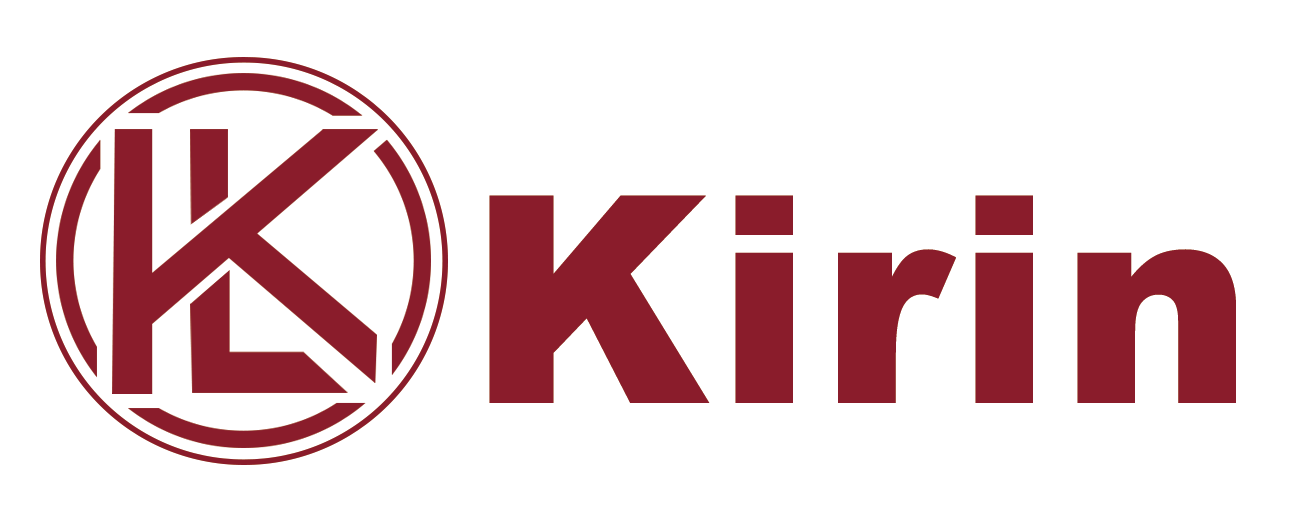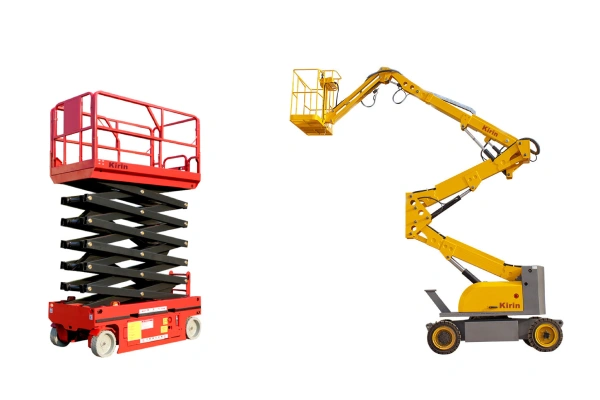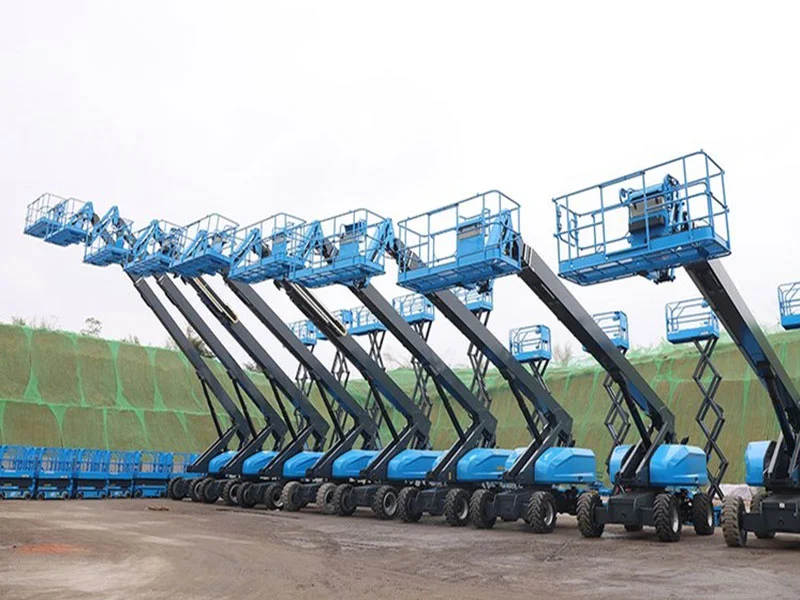
Introduction
Working at heights is a common requirement across many industries, from construction and maintenance to film production and tree care. To safely and efficiently reach elevated work areas, various pieces of equipment have been developed, and among the most versatile are boom lifts. Also known as aerial work platforms (AWPs) or cherry pickers, boom lifts provide a secure and stable platform for workers and their tools. However, not all jobs are created equal, and neither are boom lifts. Understanding the diverse boom lift sizes available is crucial for selecting the right equipment for your specific needs, ensuring both safety and productivity.
In this comprehensive guide, we’ll delve into the world of boom lifts, exploring their types, the importance of size, and the various factors to consider when making your selection. Whether you’re a seasoned professional or new to aerial work platforms, this guide will equip you with the knowledge to confidently choose the ideal boom lift for your next project.
What is a Boom Lift?
At its core, a boom lift is a type of aerial work platform designed to lift workers and equipment to significant heights. It consists of a platform (or basket) attached to a hydraulic arm (the “boom”) that extends from a base. The base can be wheeled, tracked, or designed for towing, offering different levels of mobility and stability.
Boom lifts are distinct from scissor lifts, which move vertically only, as boom lifts offer both vertical and horizontal reach. This flexibility allows operators to navigate around obstacles and access hard-to-reach areas, making them indispensable on diverse job sites.
Why Size Matters?
When it comes to boom lifts, size isn’t just about how high it can reach; it encompasses several critical dimensions that directly impact the lift’s suitability for a given task. Choosing the right boom lift sizes is paramount for several reasons:
- Reach and Height: The most obvious factor, the working height and horizontal outreach determine if the lift can access the required area. Too small, and you won’t reach; too large, and it might be impractical or even unsafe.
- Weight Capacity: Every boom lift has a maximum weight capacity for its platform, including personnel, tools, and materials. Exceeding this limit is extremely dangerous and can lead to equipment failure.
- Maneuverability: The physical dimensions of the boom lift itself – its width, length, and stowed height – dictate its ability to navigate through doorways, narrow aisles, or congested job sites. Large boom lift sizes are unsuitable for confined spaces.
- Ground Conditions: The weight and footprint of the lift are crucial for assessing its impact on the ground. Heavier lifts might require ground protection or be unsuitable for delicate surfaces. Tracked models (like spider lifts) are designed for uneven or sensitive terrain.
- Transport and Storage: The overall size and weight of the boom lift affect its transportability to and from the job site. Larger machines may require specialized trailers and permits, adding to logistical costs.
- Cost-Effectiveness: Renting or purchasing a boom lift that is excessively large for the task can lead to unnecessary expenses. Understanding appropriate boom lift sizes can optimize your budget.
In essence, selecting the wrong boom lift sizes can lead to inefficiency, increased costs, safety hazards, and even project delays.
Understanding Boom Lift Types
Before diving into specific boom lift sizes, it’s essential to understand the main categories of boom lifts, as their design dictates their capabilities and typical size ranges.
Brief overview of main categories:
Articulating Boom Lifts (Knuckle Booms):
These lifts feature a boom that “knuckles” or bends at multiple points, much like a human arm. This articulation allows them to reach up and over obstacles, making them highly versatile for complex work environments. They are excellent for navigating around pipes, machinery, or other structures.
Telescopic Boom Lifts (Straight Booms):
Also known as stick booms, these lifts have a straight, extendable boom that telescopes out to reach significant heights and horizontal distances. They offer greater horizontal outreach and often higher weight capacities than articulating booms, making them ideal for tasks requiring a straight shot to a high, unobstructed work area.
Towable Boom Lifts (Trailer-Mounted Booms):
Designed to be towed by a truck or SUV, these compact and lightweight boom lifts are highly portable. They are typically smaller in scale and are popular for residential projects, tree trimming, and light construction where frequent repositioning is required.
Crawler Spider Boom Lifts:
These lifts are mounted on tracks (like a tank) rather than wheels, giving them exceptional stability and the ability to traverse rough, uneven, or sensitive terrain. Their unique design allows them to “spider out” with outriggers for stabilization, and they are often compact when stowed, making them suitable for indoor use or accessing tight spaces.
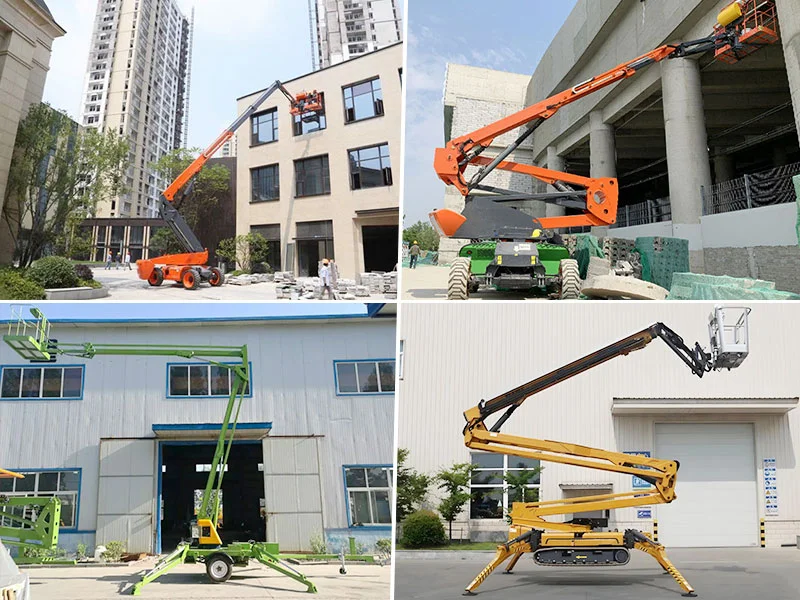
Boom Lift Sizes by Type
The range of boom lift sizes varies significantly across these categories, catering to different applications.
Articulating Boom Lift Sizes:
Articulating boom lifts are known for their impressive maneuverability and ability to work in confined spaces or around obstacles. Their boom lift sizes generally range as follows:
- Working Height: Typically from 30 feet (9 meters) up to 135 feet (41 meters). Common sizes include 45-foot, 60-foot, 80-foot, and 125-foot models.
- Horizontal Outreach: Can range from 20 feet (6 meters) to over 70 feet (21 meters). The outreach is often a key factor for these lifts due to their ability to go “up and over.”
- Platform Capacity: Usually between 300 lbs (136 kg) and 1,000 lbs (454 kg). Some models offer dual capacities (e.g., restricted and unrestricted), allowing for higher loads at closer outreach.
- Width: Varies depending on the model, but generally from 5 feet (1.5 meters) for compact models to over 8 feet (2.4 meters) for larger ones. This is critical for navigating doorways or narrow passages.
- Weight: From around 10,000 lbs (4,500 kg) for smaller units to over 50,000 lbs (22,700 kg) for the largest models.
These boom lift sizes make articulating booms ideal for tasks like facility maintenance, electrical work, HVAC installation, and intricate construction projects where precise positioning is key.
Telescopic Boom Lift Sizes:
Telescopic boom lifts excel when maximum reach and a straight shot are required. Their boom lift sizes tend to be larger, reflecting their capability for greater heights and outreach:
- Working Height: From 40 feet (12 meters) up to an impressive 185 feet (56 meters) or more, making them some of the tallest aerial platforms available. Popular sizes include 60-foot, 80-foot, 100-foot, and 135-foot models.
- Horizontal Outreach: Can extend from 30 feet (9 meters) to over 80 feet (24 meters), offering substantial reach from a fixed position.
- Platform Capacity: Typically ranges from 500 lbs (227 kg) to 1,000 lbs (454 kg), with some heavy-duty models exceeding this.
- Width: Generally wider than articulating booms, ranging from 7 feet (2.1 meters) to over 9 feet (2.7 meters).
- Weight: Can range from 15,000 lbs (6,800 kg) for smaller units to well over 70,000 lbs (31,750 kg) for the largest super booms.
Telescopic boom lifts are frequently used for large-scale construction, bridge inspection, exterior building maintenance, and applications where significant elevation and outreach are needed without complex obstructions. The greater boom lift sizes here allow for more demanding tasks.
Towable Boom Lift Sizes:
Towable boom lifts are characterized by their portability and are generally smaller in overall scale. Their boom lift sizes are designed for ease of transport and setup:
- Working Height: Typically from 30 feet (9 meters) to 50 feet (15 meters).
- Horizontal Outreach: Ranges from 15 feet (4.5 meters) to 30 feet (9 meters).
- Platform Capacity: Usually between 300 lbs (136 kg) and 500 lbs (227 kg).
- Stowed Dimensions: Designed to be compact for towing, with stowed lengths often under 20 feet (6 meters) and widths around 5-6 feet (1.5-1.8 meters).
- Weight: Considerably lighter than self-propelled booms, ranging from 3,000 lbs (1,360 kg) to 5,000 lbs (2,270 kg), making them towable by standard pickup trucks.
These boom lift sizes make towable models ideal for homeowners, landscapers, painters, and general contractors who need occasional access to moderate heights without investing in or transporting larger, heavier equipment.
Crawler Spider Boom Lift Sizes:
Crawler spider boom lifts offer a unique combination of compactness, stability, and off-road capability. Their boom lift sizes are designed for versatility in challenging environments:
- Working Height: From 30 feet (9 meters) up to 100 feet (30 meters) or more, despite their compact stowed dimensions.
- Horizontal Outreach: Can range from 15 feet (4.5 meters) to over 50 feet (15 meters).
- Platform Capacity: Generally between 300 lbs (136 kg) and 500 lbs (227 kg).
- Stowed Dimensions: Remarkably compact, often allowing them to fit through standard doorways (as narrow as 3 feet / 0.9 meters) when tracks are retracted.
- Weight: Varies widely based on reach, from 3,000 lbs (1,360 kg) for smaller units to 20,000 lbs (9,070 kg) or more for larger models.
Spider lifts are indispensable for indoor atrium work, delicate flooring, steep slopes, muddy terrain, and any job requiring high reach from a compact, go-anywhere machine. Their specialized boom lift sizes make them niche but highly effective.
Factors to Consider When Choosing Boom Lift Sizes
Beyond the general categories and their typical boom lift sizes, several specific factors must be carefully evaluated to ensure you select the most appropriate equipment for your task:
- Required Working Height and Outreach: This is the most fundamental consideration. Measure the highest point you need to reach and the maximum horizontal distance required from the base of the lift. Always factor in a comfortable margin for safety and maneuverability.
- Platform Capacity (Personnel and Materials): Calculate the total weight of workers, tools, and any materials that will be on the platform. Never exceed the rated capacity, as this poses severe safety risks.
- Worksite Conditions (Terrain and Space):
- Indoor vs. Outdoor: Indoor projects often require electric or hybrid lifts to avoid emissions and noise, and demand compact boom lift sizes to fit through doors and around obstacles. Outdoor projects might tolerate larger, diesel-powered lifts.
- Rough Terrain: Uneven ground, slopes, or soft surfaces necessitate rough-terrain tires, four-wheel drive, or tracked spider lifts.
- Confined Spaces: Tight aisles, narrow doorways, or areas with overhead obstructions will dictate the maximum width, length, and stowed height of the boom lift.
- Floor Loading: For indoor or multi-story work, consider the floor’s weight-bearing capacity. Larger boom lift sizes can exert significant pressure.
- Power Source:
- Electric: Ideal for indoor use due to zero emissions and quiet operation. Limited by battery life.
- Diesel/Gasoline: Powerful and suitable for outdoor, heavy-duty applications. Produce emissions and noise.
- Bi-Energy/Hybrid: Offer the flexibility of both electric and internal combustion engines, suitable for mixed indoor/outdoor use.
- Rental vs. Purchase: For occasional use, renting is often more cost-effective. For frequent, long-term projects, purchasing might be more economical. Consider maintenance, storage, and transport costs for both options.
- Operator Skill and Training: Ensure that operators are properly trained and certified for the specific type and boom lift sizes they will be operating.
- Transportation Logistics: How will the boom lift be transported to and from the job site? Consider trailer requirements, permits for oversized loads, and accessibility for delivery.
- Budget: Boom lift rental rates and purchase prices vary significantly with boom lift sizes, features, and type. Balance your needs with your budget.
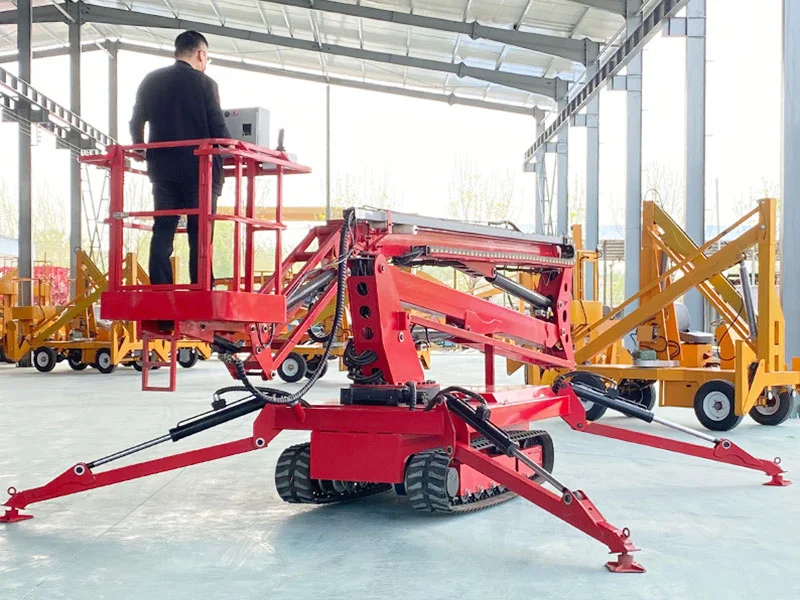
Safety Considerations
Operating any aerial work platform, regardless of its boom lift sizes, comes with inherent risks. Safety must always be the top priority.
- Operator Training and Certification: All operators must be thoroughly trained and certified according to OSHA (Occupational Safety and Health Administration) or local regulatory standards.
- Pre-Operation Inspection: Conduct a thorough pre-operation inspection before each use, checking fluid levels, controls, tires/tracks, safety devices, and the overall condition of the lift.
- Site Assessment: Always assess the job site for hazards such as uneven terrain, overhead power lines, unstable ground, slopes, and pedestrian traffic.
- Weight Limits: Never exceed the platform’s rated weight capacity. Overloading is a leading cause of boom lift accidents.
- Outrigger Deployment: For lifts equipped with outriggers, ensure they are fully extended and properly set on stable ground as per the manufacturer’s guidelines.
- Fall Protection: Operators and occupants must always wear appropriate personal fall arrest systems (PFAS) and be tied off to the designated anchor points on the platform.
- Weather Conditions: Do not operate boom lifts in high winds, lightning, or other severe weather conditions.
- Clearance: Maintain safe distances from power lines, overhead obstructions, and other equipment.
- Emergency Procedures: Be familiar with the lift’s emergency lowering procedures and ground controls.
Adhering to these safety protocols is non-negotiable for preventing accidents and ensuring a safe working environment.
Conclusion
Choosing the right boom lift is a critical decision that impacts project efficiency, safety, and cost. By understanding the different types of boom lifts and their typical boom lift sizes, along with the key factors to consider, you can make an informed choice that perfectly matches your project requirements.
From the articulated dexterity of knuckle booms to the towering reach of telescopic lifts, the portable convenience of towable models, and the go-anywhere versatility of spider lifts, there’s a boom lift designed for almost every elevated task. Always prioritize safety, ensure proper training, and never compromise on selecting equipment that is perfectly sized and suited for the job at hand. By doing so, you’ll ensure your operations are conducted safely, efficiently, and effectively, reaching new heights with confidence.
FAQs
Q1: What is the average working height of a boom lift?
A1: The average working height varies greatly depending on the type. Articulating booms commonly range from 45 to 85 feet, while telescopic booms can easily reach 100 to 135 feet. Towable booms are usually in the 30-50 foot range, and spider lifts offer a wide range from 30 to over 100 feet while maintaining compactness. The key is to find the boom lift sizes that match your specific height requirements.
Q2: Can one person operate a boom lift?
A2: Yes, many boom lifts are designed for single-person operation from the platform controls. However, it’s always recommended to have a spotter on the ground, especially in busy or confined areas, to ensure safety and assist with maneuvers. Proper training is essential for any operator.
Q3: What is the difference between an articulating boom lift and a telescopic boom lift?
A3: The main difference lies in their boom structure and movement. An articulating boom lift has multiple jointed sections that allow it to bend and maneuver around obstacles (like a knuckle), making it ideal for congested areas. A telescopic boom lift has a straight boom that extends and retracts like a telescope, providing greater horizontal outreach and vertical height for unobstructed access. These different designs lead to varying boom lift sizes and applications.
Q4: How do I know what size boom lift I need?
A4: To determine the correct boom lift sizes, you need to consider:
- Maximum working height: How high do you need to reach?
- Maximum horizontal outreach: How far horizontally from the base of the machine do you need to reach?
- Platform capacity: What is the combined weight of workers, tools, and materials?
- Worksite conditions: Is the terrain rough or smooth? Are there obstacles or narrow spaces? By evaluating these factors, you can narrow down the appropriate boom lift sizes and types.
Q5: Are boom lifts safe to use?
A5: Yes, boom lifts are safe to use when operated by properly trained and certified personnel who follow all safety guidelines and manufacturer’s instructions. Neglecting safety protocols, such as exceeding weight limits, operating in adverse weather, or failing to conduct pre-operation checks, significantly increases the risk of accidents. Safety should always be the priority when dealing with any boom lift sizes.
